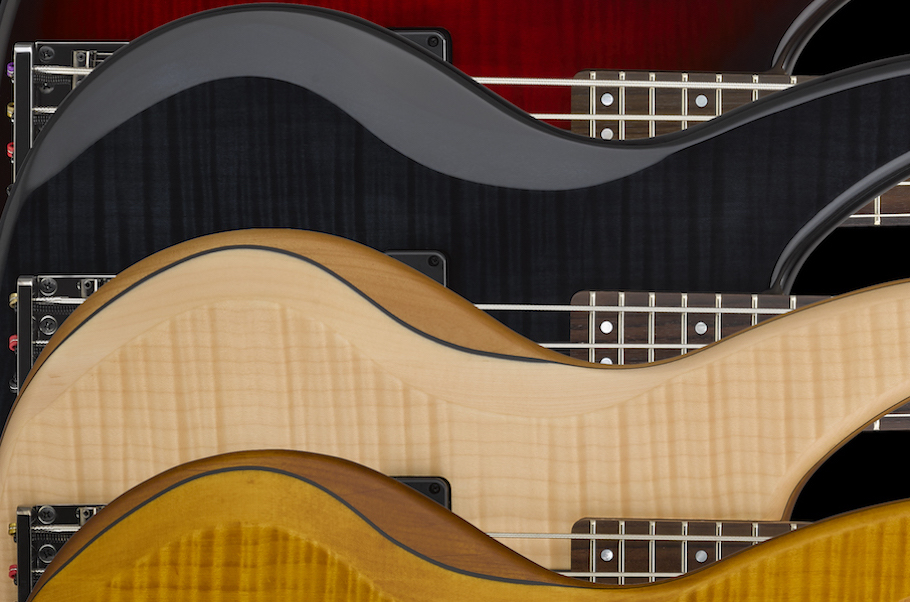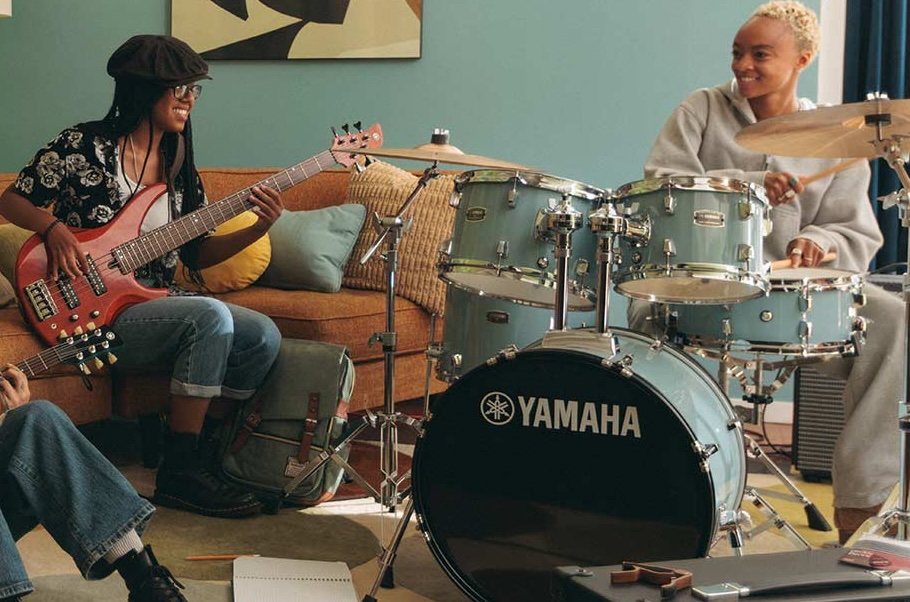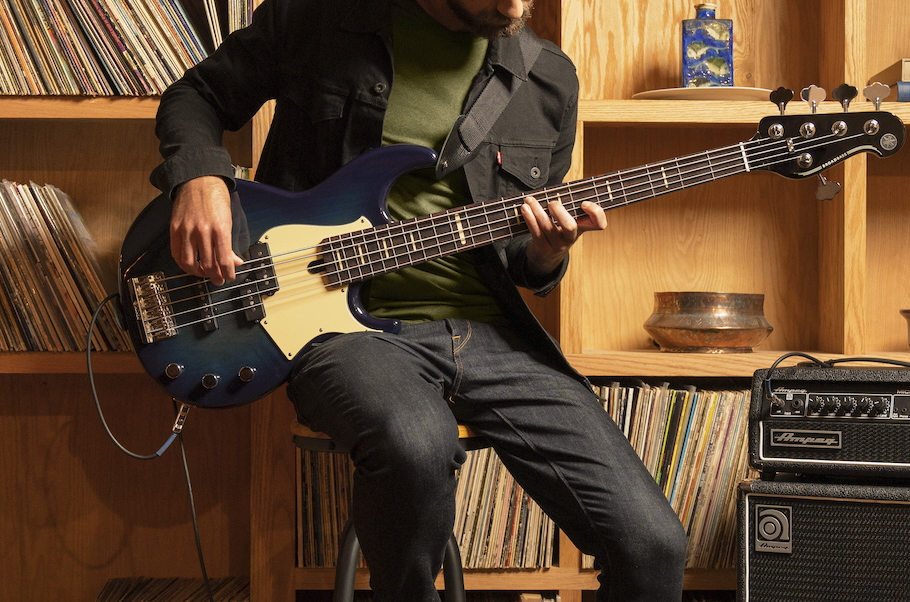How to Play Bass Guitar Harmonics
Add sparkle to your basslines with these bell-like tones.
String players in classical music — most notably, violinists — have been using harmonics for hundreds of years. More recently, acoustic guitar players like Lenny Breau and Tommy Emmanuel have employed harmonics with great sensitivity and melodic imagination. And ever since Jaco Pastorius set the bass world on fire in the 1970s with dazzling harmonics in songs like “Portrait of Tracy,” “Okonkole y Trompa,” Weather Report’s “Birdland” and Joni Mitchell’s “Coyote,” bass players have used these bell-like tones to add sparkle and spice to their lines.
NATURAL VS. ARTIFICIAL
Natural harmonics are chime-like sounds that occur at the halfway point of each string — on bass, that’s the 12th fret — where you’ll find a “node,” a spot on the string that doesn’t vibrate. It’s the same note as the open string, only an octave higher. Dividing the string again, the node at the seventh fret gives us a note that’s an octave and a fifth up from the open string. (On the G string, that’s a D.) Finally, the fifth fret produces a note two octaves up.
There are many places to play harmonics, but some of the strongest harmonics begin at the third fret and occur at odd-numbered frets. Many basses, including all Yamaha models, have fret markers at the third, fifth, seventh, ninth, 12th and 17th frets, which are great spots for harmonics. The illustration below shows the most robust and commonly used natural harmonics on a five-string bass. The patterns repeat beyond the 12th fret: The 15th and 19th frets have the same harmonics as the third and seventh frets, and the 17th fret mirrors the fifth and 12th frets.

Natural harmonics happen on open strings, whereas fretted notes that produce harmonics are called artificial (or “false”). To play a natural harmonic, touch the open string lightly at the desired fret, as shown in the video below of me playing a Yamaha BB435 five-string bass:
To produce artificial harmonics, fret any note, then tap or “pinch” the same note on the same string an octave higher (12 frets away), as demonstrated in this video by Yamaha Artist Billy Sheehan playing his signature Yamaha Attitude Limited 3 bass. (Billy also demonstrates the technique at the beginning of this video.) The great thing about artificial harmonics is that you aren’t limited to natural nodes — you can generate them anywhere on the fretboard.
TUNE UP
Many bass players use natural harmonics at the fifth and seventh frets to get in tune. If you’ve never done it, try it! It’s easy and reliable.
As shown in the video below, start by using a tuner to make sure your G string is in tune. When you’re ready, place your fretting-hand index finger on the G string directly on top of the seventh fret. Press lightly while playing the note with your picking hand. You’ll hear a D harmonic. Now play the fifth-fret harmonic on your D string, which is also a D harmonic, and tune your D string until they match without hearing any audible beating between the two tones. Do the same on the rest of your strings: Tune the seventh-fret harmonic on your D string to the fifth-fret harmonic on your A string, and then tune the seventh-fret harmonic on your A string to the fifth-fret harmonic on your E string. If you have a 5-string, tune the seventh-fret harmonic on your E to the fifth-fret harmonic on your B.
With a little practice, tuning a bass using harmonics becomes easy, and it’s especially useful if you’re playing alongside a piano that’s out of tune: Simply tune the A at the seventh fret of your D string to the piano’s A below middle C, then tune the rest of your instrument to match.
Dead strings and too much low end get in the way of clean, chiming harmonics, so don’t hesitate to put on fresh strings and dial in some highs; if your bass has two pickups, use the bridge pickup when tuning.
Here’s a video of a short improvisation played on a Yamaha TRB bass that uses natural harmonics with fretted notes in-between. (While Yamaha no longer makes the TRB, the TRBX is its contemporary 34″ scale cousin.)
LISTEN AND EXPERIMENT
Now that you’re familiar with harmonics, listen to how innovative bass players like Victor Wooten, Squarepusher, Randy Coven and Alain Caron have used them, and then marvel at how a violinist like Hilary Hahn employs harmonics in an orchestral setting.
As you begin to explore, listen for the many other, more subtle harmonics available on your bass, in addition to the natural ones shown in the illustration above. An easy way to find them is to simply move your fretting-hand fingers lightly over a string while playing with your picking hand. You’ll discover that you can play each open string’s major triad — for example, D, F# and A on the D string — by playing at the fifth, fourth and third frets, and again, at the 12th, ninth and seventh frets. Finding the distance from a harmonic to its matching fretted note can help you map harmonics on the fretboard. At the fourth fret, for instance, the harmonics are a fifth away on the next highest string. Try playing two or three harmonics at once to form ringing chords. Add effects like reverb, chorus and distortion to make them really stand out. As you experiment, new sonic vistas will be revealed, and your basslines will be greatly enhanced.














